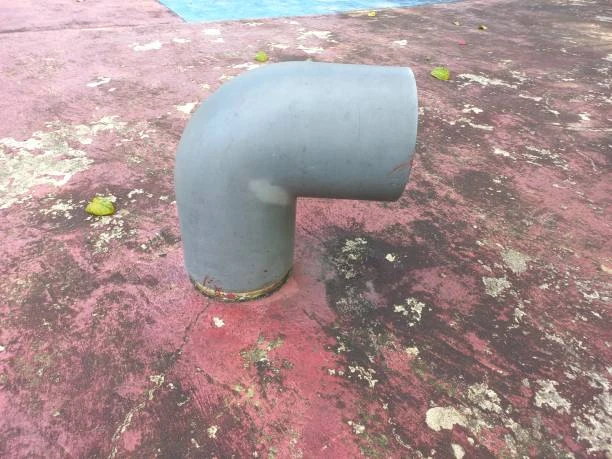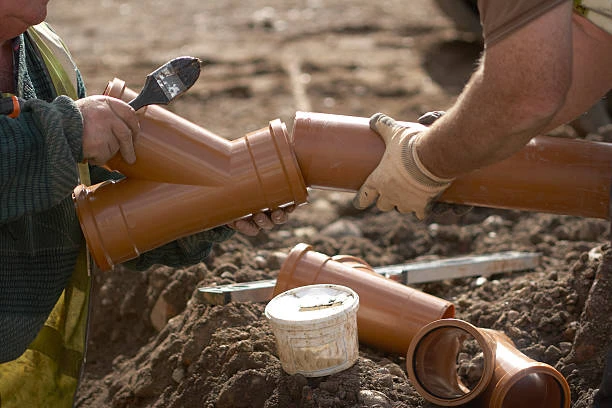Introduction
The plastic pipes and fittings market in Indonesia is a dynamic and rapidly growing sector, playing a pivotal role in the country’s infrastructure development. As urbanization increases and construction projects continue to rise, the demand for efficient, durable, and cost-effective plumbing solutions has skyrocketed. Plastic pipes and fittings have become essential components in various industries, from water supply and sanitation to agriculture and industrial applications.
Market Overview
Indonesia’s plastic pipes and fittings market has witnessed significant growth over the past decade. With the increasing demand for reliable infrastructure in residential, commercial, and industrial sectors, the market is expected to continue its upward trajectory. According to recent reports, Indonesia is one of the largest consumers of plastic pipes in Southeast Asia, with a market valuation that is set to expand over the next few years. This growth is driven by factors like urban expansion, population growth, and government-led infrastructure projects.
Factors Driving Market Demand
Increasing Urbanization and Infrastructure Development
Indonesia’s rapid urbanization is one of the key factors boosting the demand for plastic pipes and fittings. As cities expand, the need for efficient plumbing systems, sanitation, and irrigation solutions becomes critical. Plastic pipes are preferred due to their lightweight nature, ease of installation, and cost-effectiveness.
Rising Demand for Efficient Plumbing Systems
Another driver for market growth is the increasing focus on sustainable and efficient water management systems. Plastic pipes offer better flow characteristics, corrosion resistance, and longevity compared to traditional materials like metal or concrete. This makes them an ideal choice for plumbing systems in both residential and commercial spaces.
Types of Plastic Pipes and Fittings
Polyvinyl Chloride (PVC) Pipes
PVC pipes are one of the most widely used types of plastic pipes in Indonesia. Known for their durability, chemical resistance, and affordability, they are used extensively in water supply and sewage systems.
High-Density Polyethylene (HDPE) Pipes
HDPE pipes are highly durable and resistant to both corrosion and abrasion. They are increasingly being used in industrial applications, as well as for transporting water and gas.
Cross-Linked Polyethylene (PEX) Pipes
PEX pipes are flexible, resistant to high temperatures, and are used predominantly in residential plumbing and heating systems.
Polypropylene Random (PPR) Pipes
PPR pipes are gaining popularity due to their high resistance to temperature changes and chemicals. These pipes are used in hot and cold water supply systems and industrial fluid transport.
Key Applications of Plastic Pipes and Fittings
Plumbing and Water Supply
Plastic pipes are extensively used in plumbing systems across residential and commercial buildings. They provide an affordable and durable solution for water distribution.
Sewerage Systems
In addition to water supply, plastic pipes are also a key component in sewerage and drainage systems due to their resistance to chemicals and wear.
Agriculture Irrigation
Farmers in Indonesia are increasingly turning to plastic pipes for irrigation, as they are both cost-effective and long-lasting.
Industrial Applications
Plastic pipes are also used in various industrial applications, including chemical transportation and waste management.
Competitive Landscape
Major Players in Indonesia’s Plastic Pipe and Fittings Market
The market is highly competitive, with several domestic and international players vying for market share. Leading companies include PT Wahana Duta Jaya Rucika, PT Langgeng Makmur Industri, and other key players.
Market Share of Key Manufacturers
These companies hold a significant share of the market, driven by their focus on product innovation, distribution networks, and competitive pricing strategies.
Challenges Facing the Market
Environmental Concerns Related to Plastic Usage
Despite the benefits, plastic pipes face criticism due to the environmental impact associated with plastic waste. The industry is under pressure to develop more eco-friendly alternatives and improve recycling rates.
Regulatory Challenges and Quality Standards
Adhering to stringent quality standards and navigating regulatory hurdles are challenges that companies must address to remain competitive in the market.
Opportunities for Growth
Green Initiatives and Eco-Friendly Products
There is a growing demand for sustainable products in Indonesia. Companies that focus on producing eco-friendly pipes and fittings stand to gain a competitive edge in the market.
Innovation in Plastic Pipe Technologies
Technological advancements, such as the development of biodegradable plastics and improved recycling techniques, offer promising growth opportunities for manufacturers.
The Role of Government Policies
Infrastructure Development Plans in Indonesia
The Indonesian government’s ambitious infrastructure development plans, which include building new cities and upgrading existing urban areas, are creating significant demand for plastic pipes and fittings.
Supportive Policies for the Plastic Pipe Industry
Government incentives and policies that promote sustainable development in the construction and industrial sectors further bolster market growth.
Consumer Preferences and Trends
Shift Towards Cost-Effective and Durable Solutions
Consumers and businesses are increasingly opting for plastic pipes due to their cost-effectiveness, durability, and ease of installation compared to traditional materials.
Increasing Preference for HDPE and PPR Pipes
HDPE and PPR pipes are becoming more popular due to their enhanced performance characteristics, including chemical resistance and flexibility.
Impact of Global Economic Conditions
How Global Supply Chain Disruptions Affect the Market
Like other sectors, the plastic pipe and fittings industry has been affected by global supply chain disruptions, especially in sourcing raw materials.
Trade Policies and Their Impact on the Industry
Shifts in trade policies and tariffs can also influence the market, particularly in terms of pricing and the availability of imported raw materials.
Sustainability and Environmental Considerations
The Environmental Footprint of Plastic Pipes and Fittings
While plastic pipes have a lower carbon footprint compared to metal alternatives, concerns about plastic waste and environmental impact remain prevalent.

Recycling and Waste Management in the Industry
Recycling initiatives are gaining momentum, with many companies investing in better waste management solutions to minimize environmental impact.
Future Market Projections
Expected Growth of Indonesia’s Plastic Pipe and Fittings Market
The market is expected to grow significantly over the next five years, driven by infrastructure development, government policies, and technological advancements.
Key Market Trends in the Next 5 Years
Sustainability, innovation, and eco-friendly product development will be key trends shaping the market’s future.
Conclusion
In conclusion, the plastic pipes and fittings market in Indonesia is poised for continued growth. With increasing urbanization, infrastructure projects, and a shift toward sustainable solutions, the market presents ample opportunities for both domestic and international players. By focusing on innovation, eco-friendliness, and compliance with regulatory standards, companies can thrive in this competitive and expanding market.
FAQs
- What Are the Major Types of Plastic Pipes and Their Uses?
The major types include PVC, HDPE, PEX, and PPR, used in plumbing, water supply, irrigation, and industrial applications. - How Does the Indonesian Market Compare Globally?
Indonesia is one of Southeast Asia’s largest consumers of plastic pipes and fittings, with significant growth potential compared to other regions. - What Are the Benefits of Using Plastic Pipes Over Metal Pipes?
Plastic pipes are lighter, more affordable, corrosion-resistant, and easier to install, making them a popular choice over metal pipes. - How Does the Market Address Environmental Concerns?
The industry is increasingly focusing on recycling initiatives and developing eco-friendly alternatives to reduce the environmental impact. - What Are the Expected Trends in the Plastic Pipes and Fittings Market?
Key trends include sustainability, innovation in materials, and increasing demand for cost-effective and durable piping solutions.

















